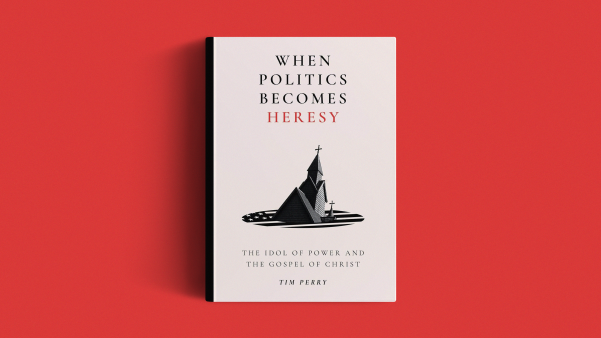Sigmund Freud’s major polemic against religion, The Future of an Illusion, was published in 1928 when Freud was seventy-two. In a letter to Oskar Pfister, the Swiss Protestant clergyman with whom he had a long correspondence, Freud wrote that he had postponed publication of this “declaration of war” out of consideration for him, “but the impulse became too strong” (Psychoanalysis and Faith, New York: Basic Books, 1963, p. 109). Freud correctly predicted that the essay would create distrust and ill will toward psychoanalysis. Although he later owned the views as his personal philosophy, the anti-religious image of psychoanalysis has persisted down to the present. Some analysts who have openly identified themselves with religious faith acknowledge that many of their colleagues agree with Freud’s view of religion.
In The Future of an Illusion, Freud carried on with an imaginary critic an argument concerning the truth of religion. Religious ideas have exercised the very strongest influence upon mankind, he acknowledged, but he asserted:
… It would indeed be very nice if there were a God, who was both creator of the world and a benevolent providence, if there were a moral world order and a future life, but at the same time it is very odd that this is all just as we should wish it ourselves [The Future of an Illusion, New York: Liveright, 1928, pp. 58, 59, 77].
Freud’s conclusion from the “discovery” that religious doctrines are illusions was that “by accepting a universal neurosis the true believer is spared the task of forming a personal neurosis.”
Pfister replied to Freud’s attack in a paper entitled “The Illusion of a Future,” published the same year in Freud’s psychoanalytic journal, Imago. In it he chided Freud for echoing old arguments against religion and for disregarding the answers to them that had been made by its defenders. He criticized Freud’s logic and cited able theologians, as well as devout philosophers and scientists, to refute Freud’s claim that religion stifles free thinking. Christianity required the giving up of wishful thinking, Pfister declared, while Freud’s optimistic expectations of science seemed themselves to embody wishful thinking.
In 1934, five years before his death, Freud published his own “Philosophy of Life” (New Introductory Lectures on Psychoanalysis, London: Hogarth Press, 1933). In keeping with his habit of ignoring critics, his Weltanschauung repeated many of the ideas in The Future of an Illusion with no notice of Pfister’s point-by-point answer. He considered religion to be “a really serious enemy” of science. He asserted that psychoanalysis is competent to trace the origin of religion. The idea of God he reduced to a childish intellectual construct, and he concluded that the truth of religion could be altogether disregarded. While recognizing that a world view based upon science is incomplete and essentially negative, he enunciated an affirmation of faith in its ultimate sufficiency and categorically accepted what is purportedly the scientific Weltanschauung.
Roman Catholic apologists were not long in replying to Freud. In 1936, Dalbiez, in a two-volume critique of psychoanalytic method (Psychoanalytical Method and the Doctrine of Freud, New York: Longmans Green, 1941), pointed out that Freud alternated between rationalism and empiricism even while he denied any concern with philosophy. Rather than allow that science’s grasp of reality is partial, leaving room for metaphysics and religion, Freud embraced the philosophy of scientism, which rejects both. Dalbiez declared that, considering the breadth of competence that it assumed, Freud’s verdict of the delusional character of religion was a notable example of “psychiatric totalitarianism.”
Rudolf Allers also represented the Thomistic viewpoint in a long critique published in 1940 under the title, The Successful Error. In an examination of the logic underlying psychoanalysis, Allers declared that the fallacy of petitio principii is inherent in the method, since observations are introduced as evidence to prove the very theories that must first be accepted in order to gather the evidence. Psychoanalysis, while professing to be science, actually has underlying it a series of axioms metaphysical in nature. In its assumption that mental and material phenomena are essentially of the same kind, psychoanalysis espouses a philosophy of materialism and determinism. Its ethics, Allers concluded, is hedonism.
In 1943, Gregory Zilboorg published Mind, Medicine and Man, writing from the unique viewpoint of a Roman Catholic psychoanalyst. He recognized that “all religious denominations were and for the most part still are opposed to Freud and to psychoanalysis.” Freud erred, Zilboorg asserted, in confusing neurotic belief with religious faith, and in basing his opposition to religion upon scientific psychology. What Freud did, unbeknown to himself, Zilboorg contended, was to establish empirically that love is the proper basis of life, a finding that is in harmony with the Christian ideal. Freud was thus the true descendant of Aristotle and St. Thomas Aquinas, even though he would have been the last to admit it. Zilboorg concluded that when terminologies are reconciled, religious dogma is supported by Freud’s factual psychological findings.
The burden of maladjustment and psychopathology accruing in World War II gave sharp impetus to psychiatry and clinical psychology. Psychoanalytic psychology and its deviant offshoot, client-centered psychotherapy, were pressed into widespread use in civilian as well as military situations. Both systems were widely accepted and applied within the pastoral counseling movement, which had also been growing rapidly.
Rabbi Joshua Liebman’s 1946 best-seller led to a spate of Peace of Mind literature. He called enthusiastically for collaboration between “revealed psychology” and “prophetic religion,” but insisted there must be a division of labor. On behalf of psychotherapy he repeated the Freudian disclaimer of ethical involvement:
Psychology and psychotherapy are scientific disciplines not basically concerned with moral judgments, whereas religion inevitably lives in the realm of ethical concepts. Psychotherapy is committed to utter neutrality in moral affairs and goes beyond its province when it makes “value judgments” about the total meaning of life [Peace of Mind, New York: Simon and Schuster, 1946, p. 177].
Liebman pictured psychiatry and religion as “twin angels, bending in unison to lift up ailing bewildered man.” “Only in the mighty confluence of these two tides,” he declared, “shall we find peace of mind.”
This rising popularity of psychiatry was marred by a rumble of opposition that evoked a defensive response front psychiatry. In May, 1946, an elite group of 150 prominent psychiatrists established the Group for the Advancement of Psychiatry, now generally known as GAP. The group began publishing a significant and constructive series of studies relating psychiatry to a broad range of disciplines and problems. In response to critical newspaper and magazine articles claiming conflict between psychiatry and religion, GAP issued a statement in 1947 affirming human betterment as the common aim of medicine and religion, with special mention of psychoanalysis. The statement concluded:
We also recognize the important role religion can play in bringing about an improved emotional and moral state. The methods of psychiatry aim to help patients achieve health in their emotional lives so that they may live in harmony with society and its standards. We believe that there is no conflict between psychiatry and religion. In the practice of his profession, the competent psychiatrist will therefore always be guided by this belief [American Journal of Psychiatry, 1947, 104:214].
This reply from psychiatry was the real beginning of dialogue. Nine years were to pass before a presidential address of the American Psychiatric Association called for a better working relationship with religion, but the GAP statement was a quasi-official acknowledgment of such a need.
The prospect of an impending partnership between psychiatry and religion stimulated two Protestant theologians to formulate the terms of such an alliance. In Psychotherapy and a Christian View of Man, published in 1950, David Roberts declared that man cannot be brought into harmony with nature and with his fellow man until he reaches a harmonious relation with God. A Christian view of God and man is needed, he insisted, to help psychiatry understand its task. The psychiatrist cannot adequately evaluate his patient’s religious views without an understanding of religious experience, preferably at first hand.
Albert Outler, in 1954, followed with Psychotherapy and the Christian Message. These two are natural allies, he acknowledged, but the premises of psychotherapy, presupposing reductive naturalism and secular humanism, are in conflict with Christian theology. Both are basic faiths, hence are no more scientific than theology, which is grounded in revelation and tested in human experience. Christianity offers the truest wisdom about human nature and destiny, Outler maintained, providing an adequate context for the scientific study of man.
Also during the fifties, studies were published by Roman Catholic, Jewish, and Lutheran groups, examining psychiatry as it related to their distinctive theological systems (J. H. VanderVeldt and R. P. Odenwald, Psychiatry and Catholicism, 1952; S. Noveck, ed., Judaism and Psychiatry, 1956; What, Then, Is Man?, published by Concordia Publishing House, 1958). Another important event of this period was the organization of the Academy of Religion and Mental Health, which has since maintained a program of interaction and established a journal.
The most significant official overture from psychiatry came from Dr. Finley Gayle, president of the American Psychiatric Association, in his 1956 presidential address. Referring to the fact that psychiatry had been under attack by clergymen, and religion under attack by psychiatrists, Dr. Gayle commented that “some psychiatrists are as apprehensive about clergymen ‘doing therapy’ as some clergymen are about catching psychiatrists in the act of ‘forgiving sin.’ ” He described the current status as one of peaceful coexistence, in which the attitude on both sides was, “We won’t bother you if you won’t bother us.”
Active cooperation, Dr. Gayle insisted, is necessary for the welfare of the patient, for religion reaches the very depths of human motivation, even the “heart,” out of which are “the issues of life.”
If healing and the forgiveness of sin could be always neatly separated, with neither having anything really significant to do with the other, the problem might be a minor one.… But that health and the release of feelings of guilt are intimately related, there can be little doubt.… We … need to recognize the big motion toward a religious solution of many human difficulties … [“Conflict and Cooperation between Religion and Psychiatry,” American Journal of Psychiatry, 1956, 113:1].
One year later, in 1957, the Group for the Advancement of Psychiatry met to hear a panel of psychiatrists and clergymen present a symposium which appeared later in a GAP monograph titled, “Some Considerations of Early Attempts in Cooperation between Religion and Psychiatry.” Both psychiatrists and clergymen offered presentations in which common goals and the value inherent in cooperation were affirmed. Divergent postulates and methods of each discipline were reviewed, and the question of proper boundaries for the work of both clergyman and psychiatrist was touched upon.
Dr. Clemens Benda, a psychiatrist, contrasted the areas of psychiatry that do not involve religion with those that do:
As soon as psychiatry is confronted with problems of character, personality, maturity and the meaning of life, it becomes clear that these questions can only be understood within a framework of values which has developed from religious beliefs.
Dr. Kenneth Appel, another psychiatrist, remarked upon the great progress in the ten years since the “timid pronouncement” of GAP in 1947. “We have 100 million people who are said to be related to churches, related to religion. They somehow or other officially say they are interested in religion.… Psychiatrists have been timid in meeting and trying to help these people.”
In the same symposium, the Catholic psychologist William Bier made this comment on experimental cooperative programs then being introduced in four theological seminaries: “Clergymen are considerably more willing to learn about psychiatry than psychiatrists are to learn about religion.… I wonder whether something comparable cannot be done to give to psychiatrists a better understanding of religion.”
The GAP symposium was primarily the transcript of a conference and was not intended as a definitive statement by psychiatry in the dialogue with religion. GAP Report No. 48, published in 1960 under the title, “Psychiatry and Religion: Some Steps Toward Mutual Understanding and Usefulness,” is an authoritative statement of the current position and outlook of psychiatry as conceived by GAP.
Since the report is intended to reach clergymen, it begins by introducing the psychiatrist. He is a medical specialist offering skill in dealing with unconscious conflict. His concern is to help correct mental disorders, the report explains, and he cannot take responsibility for deciding what the patient is to be like after treatment. Ideally, the psychiatrist will refrain from attempting to persuade his patient toward any particular attitude other than a generally realistic one, but all psychiatrists make compromises with the ideal. Examples of such compromise are: (1) being satisfied with less than a cure, or (2) using stringent authoritative measures to influence the patient’s acceptance of a particular solution.
Turning to the psychiatrist’s own religious and ethical attitude, the report recognizes that he may or may not have clearly defined religious or philosophical views, but declares that he should have fullest awareness of his own attitude toward religion. The psychiatrist cannot be temperate and objective with patients unless he knows when or where he is himself unsettled. As a practitioner and a researcher, he may well cultivate suspension of judgment, but he should not confuse this attitude with skepticism as a philosophic viewpoint. He should not attempt to impose skepticism or any other philosophic viewpoint on any patient. To do so is to exploit the psychotherapeutic relationship and to depart from his role as psychiatrist.
When the psychiatrist’s ethical position is under scrutiny, the report continues, the assertion of a “value-free” technical proficiency is inadequate reassurance. What he believes about the nature of man and about the transcendental meaning or lack of meaning in human existence will influence his concepts of normality and maturity. The psychiatrist may not be religiously inclined, but he must come to terms with the fact that our world is pervaded by religious values. If religion is involved in the patient’s illness or in his psychological functioning, it will be influenced by the treatment. Some psychiatrists may think the religious “defenses” need to be eliminated; others, that religious faith should complement therapy. With some patients, religion may not be involved in the neurosis and may be bypassed.
The report then turns to the clergyman. He is a person with a relatively intense investment in religious faith and practice. His suspicion of psychiatry derives in part from Freud’s avowed atheism. While it simply is not true that all modern psychiatrists are atheistic, the report asserts, it shouldn’t make any difference in treatment if they were, since the psychiatrist’s task is to strive for cure and not to interfere with his patient’s belief. The clergyman may be uneasy about the psychiatrist’s tolerant attitude toward acts that from a religious viewpoint are regarded as sinful. In contrast to the clergyman, who believes that morality is something revealed or referable to a transcendental power, the psychiatrist is a relativist. He “is concerned only with treating illness and not with making moral judgments.…”
This disclaimer, which would exempt the psychiatrist from the necessity of making value judgments, conflicts with earlier statements in the report which acknowledge that the psychiatrist’s very concepts of health and normality are tinctured by his personal philosophic views. This inseparability of treatment from value judgments precludes any such tidy division of labor as having the clergyman deal only with ultimate questions such as the meaning of life and of death, leaving “illness of the mind to the psychiatrist.” The ambiguity of such a cleavage is apparent, as the report acknowledges: “In occasional instances the division may not be clear and collaborative effort is called for.”
The latter third of the report is devoted largely to an examination of psychodynamics and religion in which the authors employ classical psychoanalytic concepts and terminology “to illuminate religious phenomena.” A concluding section encourages ongoing collaborative study of current moral and ethical issues in psychiatry, religion, and community life.
The progress represented by Report No. 48 and the extent of its concessions should not be diminished by recognition of its internal inconsistencies and its limitations. The responsibility toward religion here acknowledged can be fully appreciated only when seen in historical perspective. Psychiatry has traveled far from Freud’s “declaration of war” to the self-admonition included in the GAP statement.
For example, while advocating that the therapist strive for “doctrinal neutrality,” the report recognizes the limited degree to which this is possible by reminding the psychiatrist that his own philosophy of life colors his attitude toward religion. Moreover, the report emphasizes that the weight of the personal authority of the psychiatrist is great. Therefore, he must take into account the influence he inadvertently exerts upon his patients. He is called upon to make moral decisions in his daily work and must acknowledge them for what they are. Although the report tends to be somewhat patronizing toward the clergyman, there is unqualified acknowledgment that his collaboration is desirable and useful.
At two points the report invites criticism, even after its importance as a milestone in the convergence of psychiatry and religion is fully recognized. The first is a sectarian bias toward psychoanalysis. The radical turnabout in psychoanalytic theory and treatment that has followed the overhauling of classical id-concepts by ego psychology necessarily raises doubts about many of its other fundamental premises. Will psychoanalysis, along with Rogerian counseling, survive primarily as a technique rather than as a system? The manner in which this report reduces elements of religious worship to “nothing but” human defenses against instinctual forces demonstrates the omnicompetence assumed by psychoanalysis and the sheer texture of some of its constructs.
The report may also be criticized for the fallacy of looking at religion in a context of psychopathology. No psychiatrist who bases his evaluation of religious faith, as Freud did, upon the neurotic entanglements encountered in the consulting room can ever understand religion in its healthy and wholesome expression.
The willingness of psychiatrists to learn about religion doubtless still lags far behind that of clergymen to learn about psychiatry. Nevertheless, that these documents have originated within psychiatry and that psychiatrists are included in their admonitory comment bespeaks deepening understanding and encourages continuing dialogue.
Although this survey has emphasized particularly the quasi-official pronouncements of psychiatry in response to broadly based overtures and reactions from religion, recent years have also seen a remarkable increase of institutes, conferences, and curriculums bringing together representatives of both disciplines. This progress is being augmented by a parallel movement in general medicine, emphasizing the importance of collaboration between physician and clergyman. The momentum of these efforts offers substantial promise for a closer working alliance in the future.










